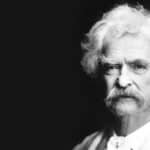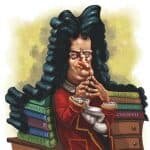JOHN STEINBECK (February 27th, 1902 – December 20th, 1968)
American writer.
Main accomplishments:
- During WWII, served as a war correspondent for the New York Herald Tribune.
- Winner of the 1940 Pulitzer Prize for Fiction, the 1962 Nobel Prize for Literature, the United States Medal of Freedom in 1964, and the Annual Paperback of the Year award in the same year.
- Author of 16 novels, six short story collections, and six non-fiction works, including Of Mice And Men (1937), The Grapes of Wrath (1939), and East of Eden (1952).
- Namesake of the John Steinbeck Award presented annually to artists who capture “the spirit of Steinbeck’s empathy, commitment to democratic values, and belief in the dignity of the common man.”
Best known as the author of such famous novels as Of Mice And Men and The Grapes of Wrath, John Steinbeck was an award-winning American writer and perhaps the most prominent literary voice of the Great Depression. His hard-hitting novels illuminated the plight of the working class during the Dust Bowl era and examined the vulnerabilities of the American Dream. Today his books continue to be studied and enjoyed around the world.
EARLY LIFE
Steinbeck was born in Salinas, California, and his works would focus on the West Coast throughout his life. Steinbeck’s mother, Olive, was an avid reader and passed her love for literature down to her son. Indeed, both of Steinbeck’s parents were very loving and supportive of John’s literary ambitions, often taking him to the theater to encourage a passion for storytelling. Growing up, Steinbeck often explored the Salinas Valley, which would become the primary backdrop for his later works.
Upon graduation from high school, he attended Stanford University until 1925, earning his tuition by working manual labor jobs around Salinas and gaining an appreciation for the plight of the working class. In 1925, he left school without a degree, traveling to New York in search of a publisher for his works. His search was in vain, and the following year he was forced to return to California.
WRITING CAREER
In 1929, Steinbeck finally managed to get his first novel published: Cup of Gold, a historical fiction story based on the life of privateer Henry Morgan. The following year he met two of the most important people in his life: his first wife, Carol Henning, and Ed Ricketts, a lifelong friend.
Throughout the 1930s, Steinbeck truly established himself as a writer of no small credit. Between 1930 and 1939 he wrote eight full-length novels, including both of his most famous masterpieces: 1937’s Of Mice and Men and 1939’s The Grapes of Wrath. The awards came shortly afterward: a Commonwealth of California Gold Medal for Tortilla Flat in 1935, a Drama Critics’ Circle Award for Mice in 1938, and more.
Steinbeck’s novels illustrated what it meant to be a poor, working-class American. He traveled the country frequently and used the experiences in his writing; it is said that the inspiration for Grapes of Wrath came about after a four-week stint working with migrant workers. A self-described Democrat, he wrote a letter to President Franklin D. Roosevelt in 1942 protesting the internment of Japanese-Americans. Steinbeck’s leftist leanings can be found throughout his body of work; he was intensely sympathetic toward the underprivileged and the downtrodden. 1942 was also the year he divorced Carol and married Gwyndolyn Conger, with whom he would have two children.
WORLD WAR II
Starting in 1943, Steinbeck served as a war correspondent for the New York Herald Tribune. His articles were published in 1958 under the title Once There Was A War. Like Ernest Hemingway, Steinbeck chronicled the events and the trials suffered by American soldiers, but unlike Hemingway, he mostly kept himself out of the narrative. He covered American training in London, the Italian campaign, and even traveled to North Africa, writing to Gwyndolyn that “it is almost impossible to keep clean here.”
During his wartime travels Steinbeck encountered many other famous writers of the day, including Hemingway, William Faulkner, and Arthur Miller, the latter of whom he would later defend against Joseph McCarthy’s investigations in the 1950s. After being wounded by shrapnel in North Africa in 1944, Steinbeck finally headed home, returning to America just a year before the war’s end.
LATER LIFE
In 1948, Steinbeck suffered a series of misfortunes: a bitter divorce from Gwyndolyn and the death of his dear friend Ed Ricketts, who was killed in a car accident. Writing turned out to be an excellent remedy for the pain and depression—that same year he published A Russian Journal, an account of his travels in the Soviet Union. In 1950, Steinbeck married again, this time to Elaine Scott. Two years later he finished East of Eden, the work he considered his masterpiece, for which, as he put it, “I have been practicing to write all my life.”
Eden was a critical success, and Steinbeck continued to write throughout the next few decades, even becoming a Vietnam War correspondent during his final years in the 1960s. He passed away in 1968 of heart failure brought on by his years of smoking. Per his request, his ashes were buried in the Salinas Valley.







